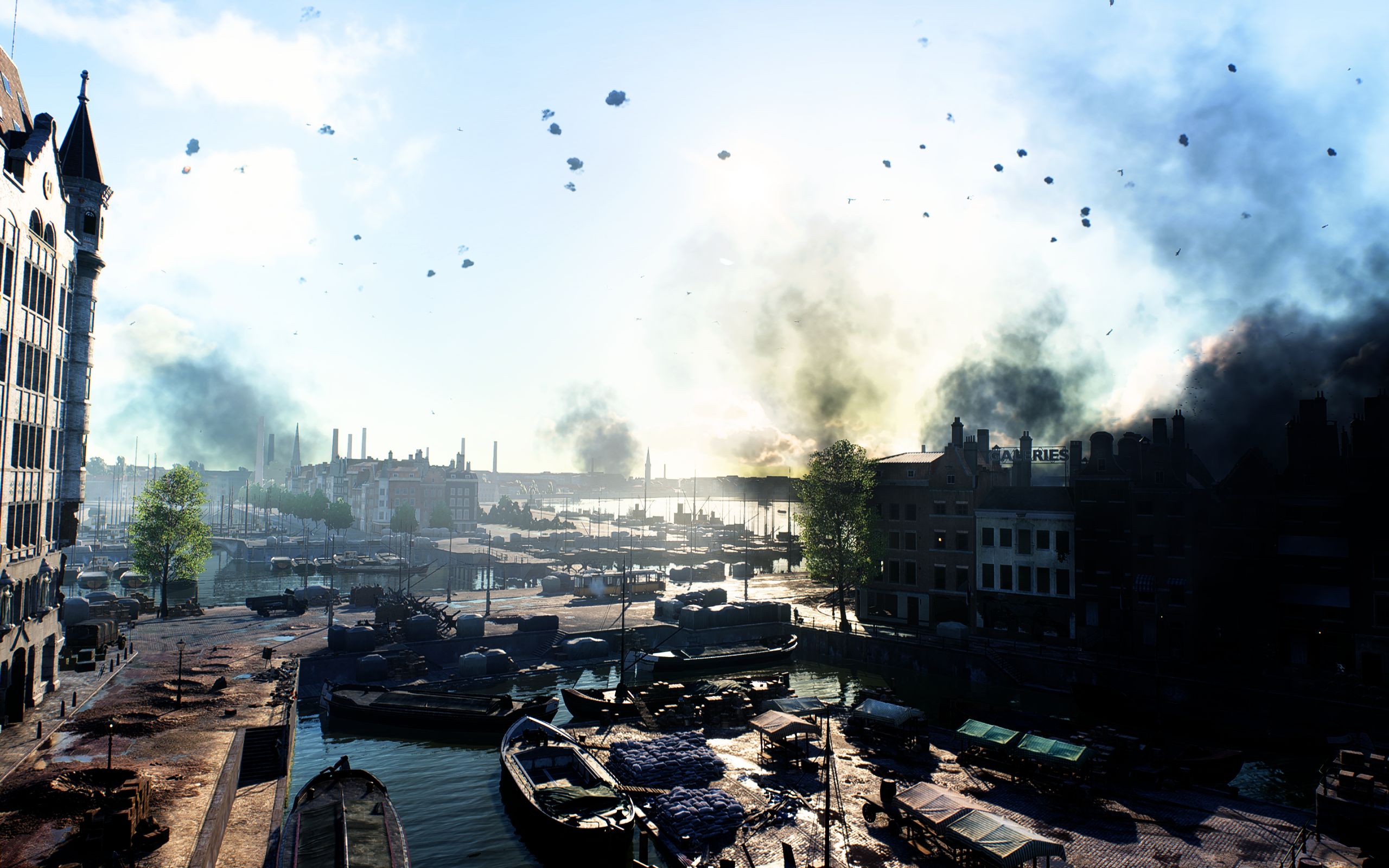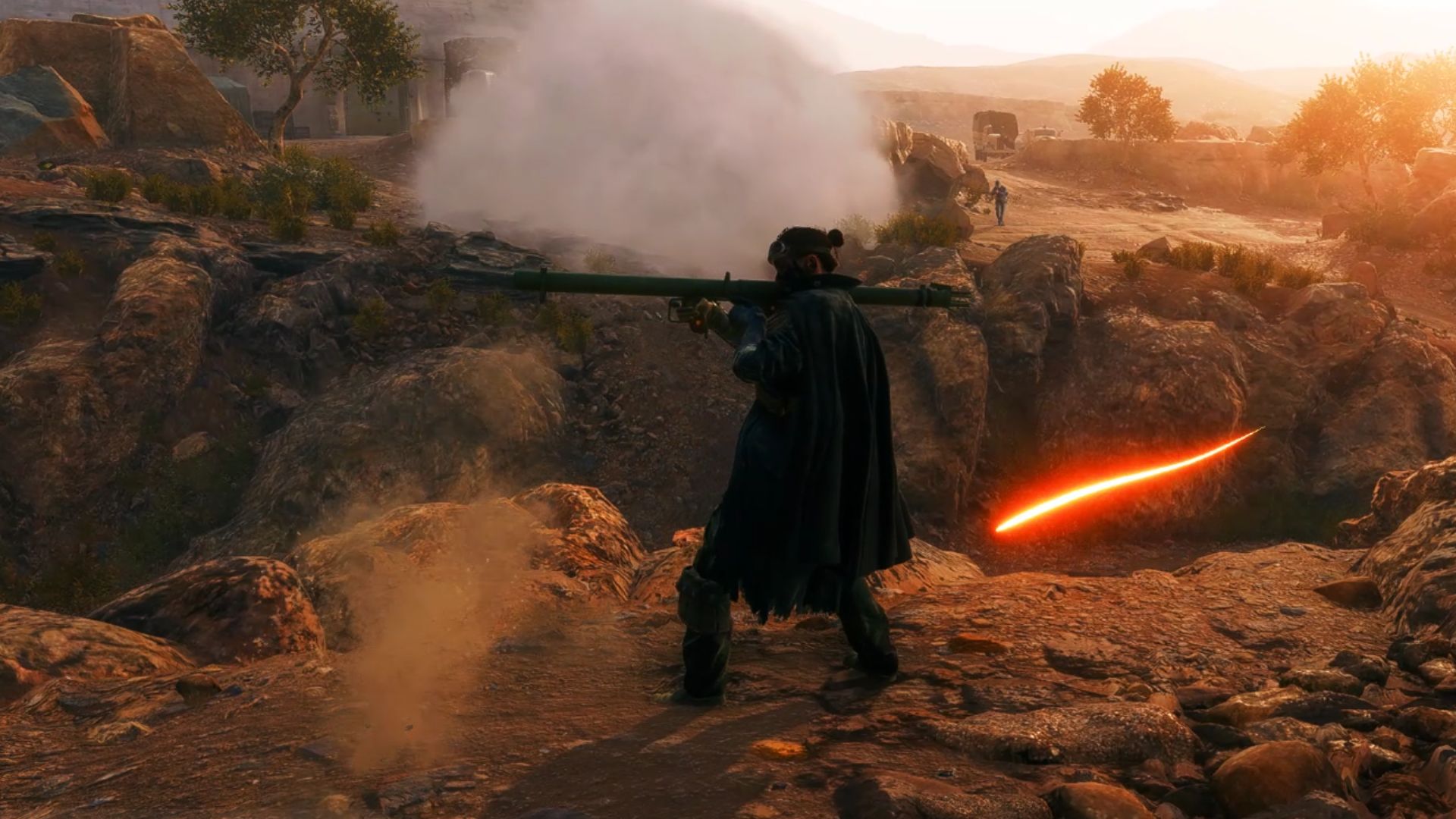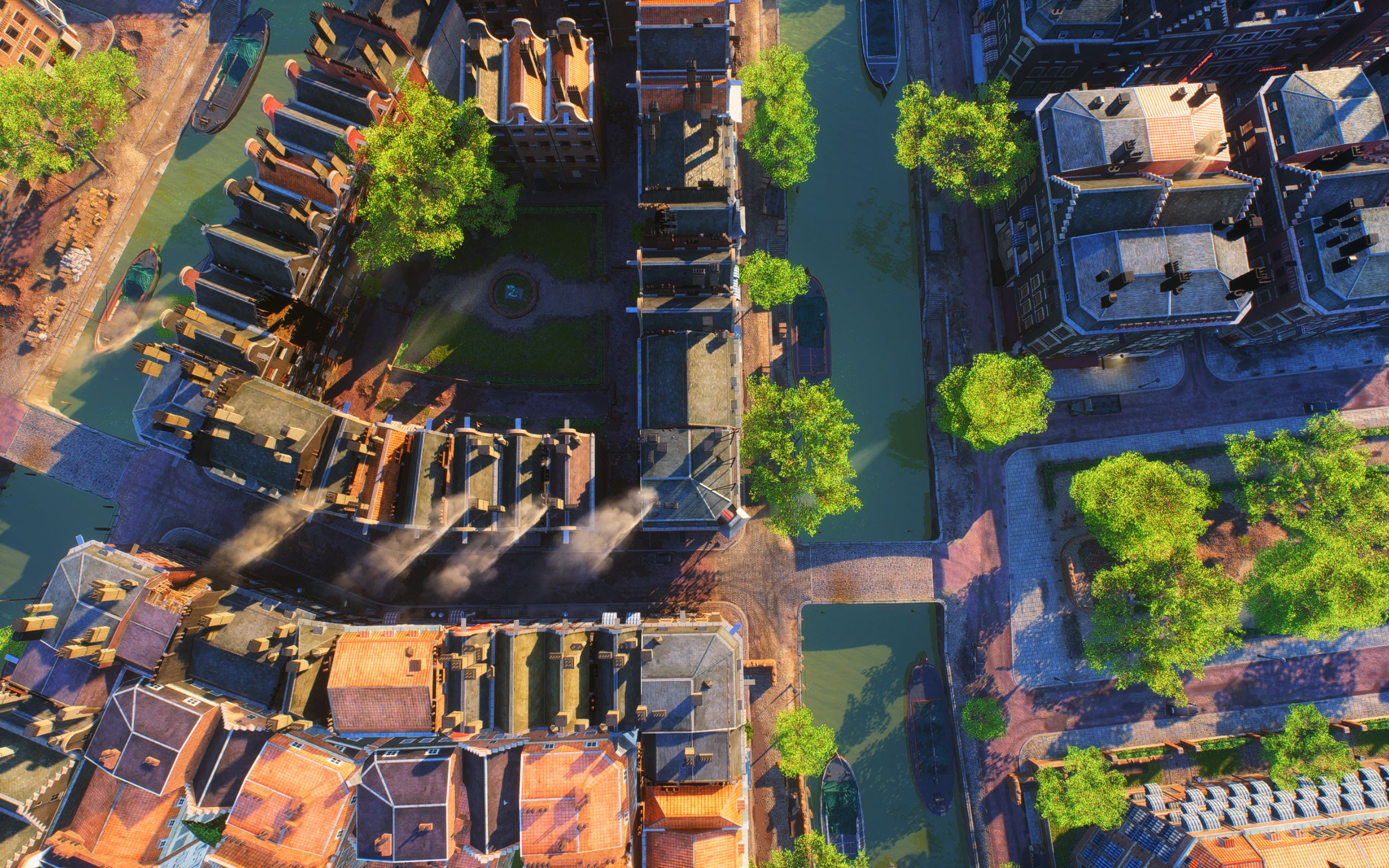Battlefield 5's spectator mode turned me into a wannabe cinematographer
How I became a battlefield voyeur.

That's right. I see you down there, pretending to know what's going on. Floundering at the first MP40 rounds sizzling near your general direction. I watch you running headlong into certain death, and I zoom in on your blood splattering on the walls. While you're bleeding out I'm slowly, gently, panning along on the floor next to you. I am a Battlefield V spectator cam voyeur, and I get my kicks watching you fight.
Nearly twenty hours I've logged now, without firing a single round in multiplayer. I never intended to become this bizarre non-player, you understand. It was, of all things, ray tracing that brought me here. One of the many perks of games writing is examining little elements like this in forensic detail and seeing a particular game in a different light as a result, and so when I needed to get some very specific capture of Nvidia's real-time ray tracing at work in EA's cutting-edge shooter around launch, I did something most of us never think to do in an online multiplayer title. I actually used spectator mode.
At first it was strictly business. Get in, get some dramatic shots of puddles reflecting things on fire or soldiers running across that marble floor in the Rotterdam map, get out.

Except I didn't just get out. I started scouting each map for the best, most reflective and fiery spots. I felt like a location scout for a World War II movie directed by Tony Scott—every floor dripping wet, every skyline billowing with smoke and flames. And by doing so I started to appreciate these enormous maps on a level I wouldn't have just by running around them hunting for kills. When your virtual life's on the line, you get a real case of tunnel vision. The incidental details fade away, but in my new self-appointed role as ray tracing spotter, I got a newfound grasp of the scale and interlacing pathways of each map. And when I found a spot where everything glimmered and reflected just right, honestly, it felt as good as getting a kill. This was the kicker, though: these areas also tended to be the busiest chokepoints.
It was like being able to see the lines of code forming every surface. From my vantage point up there, pressed up into a corner of a bank's foyer, I was at one with the developers. All these players, pottering around below like shouting, well-armed ants, they were doing just as the designers intended. They think they're storming about with the freedom to go wherever they like, but in the end they all end up in the same two or three spots, spraying bullets and screaming while I look on and fiddle around with depth-of-field settings.
All these players, pottering around below like shouting, well-armed ants.
There's an odd sort of tranquility that comes with that, and I think it's because I find Battlefield multiplayer so frenetic and stressful to actually—you know, play. Most likely you do too—it's not really a chillout proposition, is it, 64-player multiplayer with planes whizzing about overhead and muddy, ignominious death lurking around every corner.

But by taking yourself out of harm's way and seeing gunfights as simply spectacle, Battlefield V feels very zen. That's not to say spectator mode doesn't present its own challenges, though. Just as the soldiers I like to watch slowly grow in map knowledge, weapon competence and figure out the best loadouts for each situation, the budding Battlefield V cinematographer has a surprisingly voluminous array of options, filters, and techniques to master. First and foremost is camera control itself—there's nothing satisfying about juddering about like a panicking daddy long legs in among the battle. We're not talking about noclip-style movement here, but a way of panning, rolling and rotating the camera that's aesthetically pleasing and mimics real cinematography.
Keep up to date with the most important stories and the best deals, as picked by the PC Gamer team.
I find a controller works best for wide angle shots and high-up exterior pans. The analog sticks just smooth out your inputs, so when you're whizzing over the wrecked planes of Aerodrome you get drone-style shots. Very pleasing. Thankfully spectator mode's camera sensitivity settings run a very wide gamut, and by dropping vertical and horizontal sensitivity down to around 2% I get very cinematic movement with a controller.
For interiors and battle shots, though, I like to use a mouse. This is the equivalent of going handycam for those kinetic, Hurt Locker-style shots. I whack the sensitivity up a bit when doing this, head to a chokepoint and sweep past soldier's shoulders while they're taking fire. Maybe I've done this over one of your gunfights. You'll never know.

And these are just the basics. Battlefield V cinematography 101. To really get the showstopping shots, you need to follow Bf 109s around in third-person cam and find the perfect angle to capture them taking anti-aircraft fire, the flak shimmering across their wings. You need to change the weather settings and capture Aurora Borealis over the snowcapped fjords while a German squad advances through the rubble of Narvik. It is a game in its own right, and you can't make me stop.
I know after watching a player for five seconds whether they're any good, just by where they are on the map.
Not that I'll ever break the sanctity of my personal Battlefield V multiplayer experience by actually playing a match, but I'm certain my odd little hobby has given me knowledge that would be useful if I did. I know after watching a player for five seconds whether they're any good, just by where they are on the map and where they're heading. From up high, I can see not just the conflict zones but the channels that feed them, and the routes around them that players never cover off.
I'm sure I'm not alone in this endeavour, although most of my colleagues in spectator mode are probably content creators who, you know, actually do something with all the footage they capture instead of treating Battlefield like a therapeutic garden or aquarium. I'd advocate that everyone try it once, just for a bit. Competitive players will harvest useful recon, and anyone who just wants to see what their PC can do with all the graphics settings turned up will find a no-contest alternative to the Heaven benchmark. Just know that next time you join a server, I might be watching you.
Phil 'the face' Iwaniuk used to work in magazines. Now he wanders the earth, stopping passers-by to tell them about PC games he remembers from 1998 until their polite smiles turn cold. He also makes ads. Veteran hardware smasher and game botherer of PC Format, Official PlayStation Magazine, PCGamesN, Guardian, Eurogamer, IGN, VG247, and What Gramophone? He won an award once, but he doesn't like to go on about it.
You can get rid of 'the face' bit if you like.
No -Ed.


